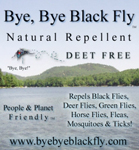Trees and Taxonomic List…. Trees Found in Maine....
Most everyone can identify a maple leaf, oak leaf, white birch bark, and a pine needle, but understanding conifer, deciduous, broadleaf, hardwood, softwood and evergreen gets a bit trickier. Complicate that with shrubs and vines and identification becomes even more difficult. Here are some basic points to keep in mind when identifying a tree.
Trees, shrubs and vines have woody stems that do not die back in the winter months. Trees usually have one stem, grow more than 15 feet tall and measure at least 3 inches in diameter at maturity. Shrubs often have multiple stems and are smaller at maturity while vines have one stem that is trailing along the ground, twines itself around objects or climbs more than 2 feet. There is more information about shrubs and vines in the plants section of Maine Nature News.
Click here for the Maine Forest Service online publication of Trees found in Maine…
Trees can be sorted into two groups, the conifer and deciduous leafed trees.
>Conifer trees have needle-leaves, do not lose their leaves and are therefore evergreen, they produce cones and are also called softwood trees.
>Deciduous trees are broad-leaf trees that lose their leaves each fall and produce a flower, are generally known as hardwood trees.
>An exception is the Tamarack Tree, a needle-bearing tree that is deciduous, meaning it looses all of its needles in the winter months.
Trees are identified by how the leaves are shaped and flower buds are formed on the tree.
>A coniferous Eastern White Pine typically has 5 slender, flexible needles that remain on the tree year-round. Compare this with a Cedar that has scale-like miniature branches.
>A deciduous Red Maple has opposite growing branches with leaf edges that are lobed meaning rounded or pointed parts of the leaf edge with deep lobes between each point. Compare this with the oaks that have alternate growing branches.
>An easy way to narrow down which of the deciduous hardwoods has opposite growing branches is to remember the acrynom MADCAP-Horse. It stands for Maple, Ash, Dogwood, Cap (which is the Latin name of honeysuckle, a shrub in Maine) and Horse Chestnut Trees.
>All other deciduous trees have alternate growing branches.
Next determine if deciduous leaves grow in a single or compound leaflet.
>Look at how the leaf is attached to the stem, is there one leaf with a stalk or are there many leaves on the stalk?
>Here is an example of opposite and alternate on both simple and compound leaf arrangements. http://www.uwgb.edu/biodiversity/herbarium/trees/alternate_opposite_leaves01.htm
Other References:
http://www.maine.gov/doc/mfs/pubs/pdf/fpminfo/19_themaineforest.pdf



